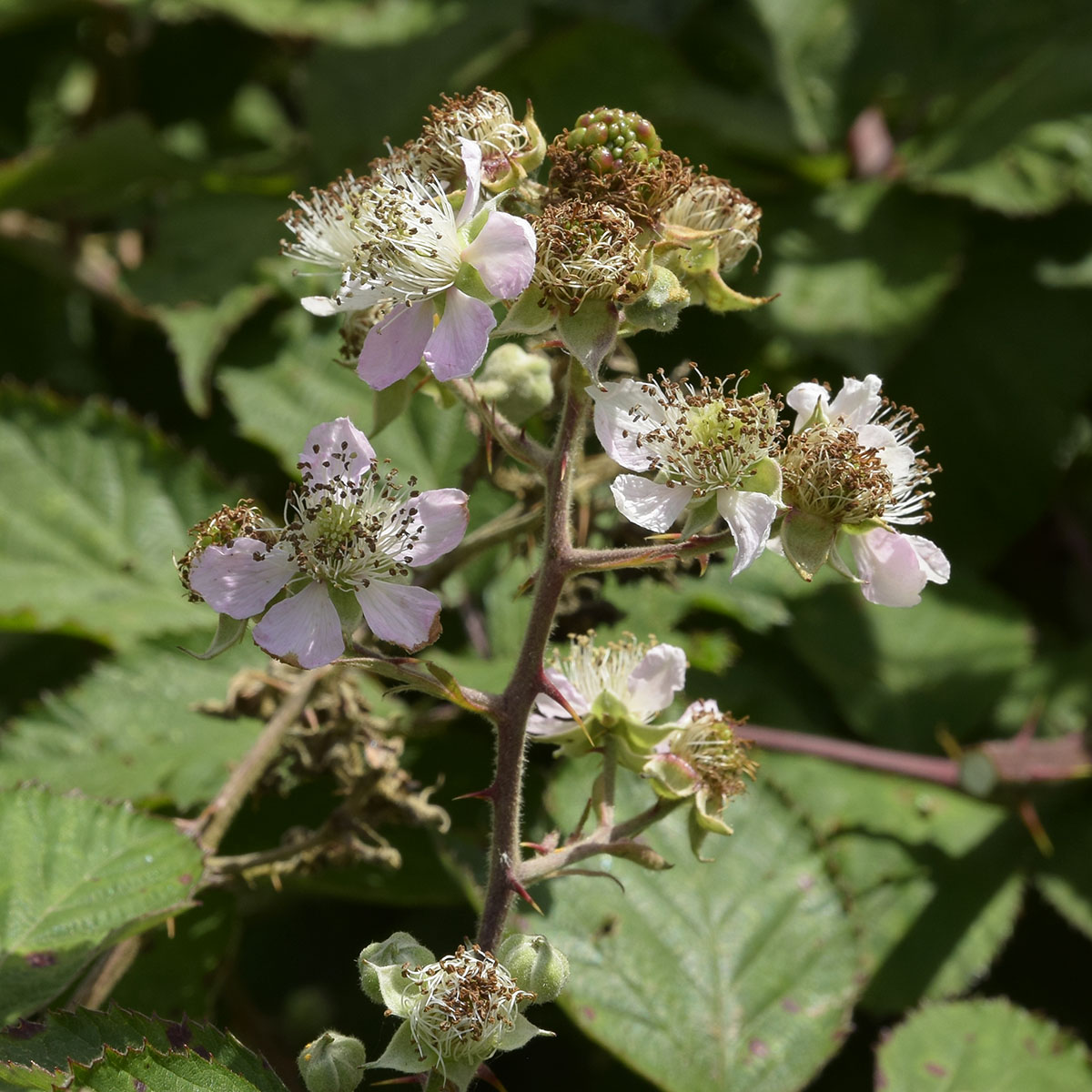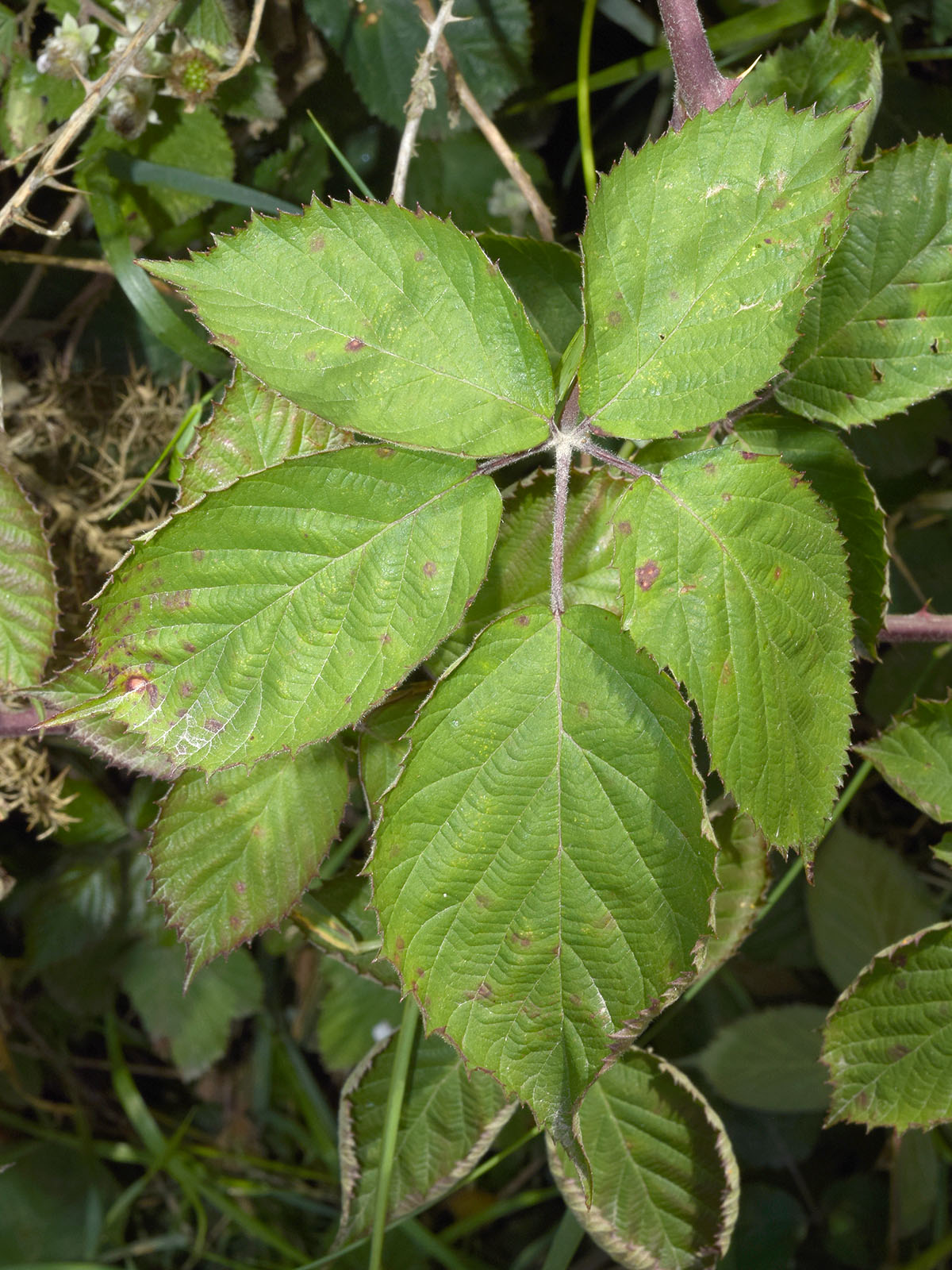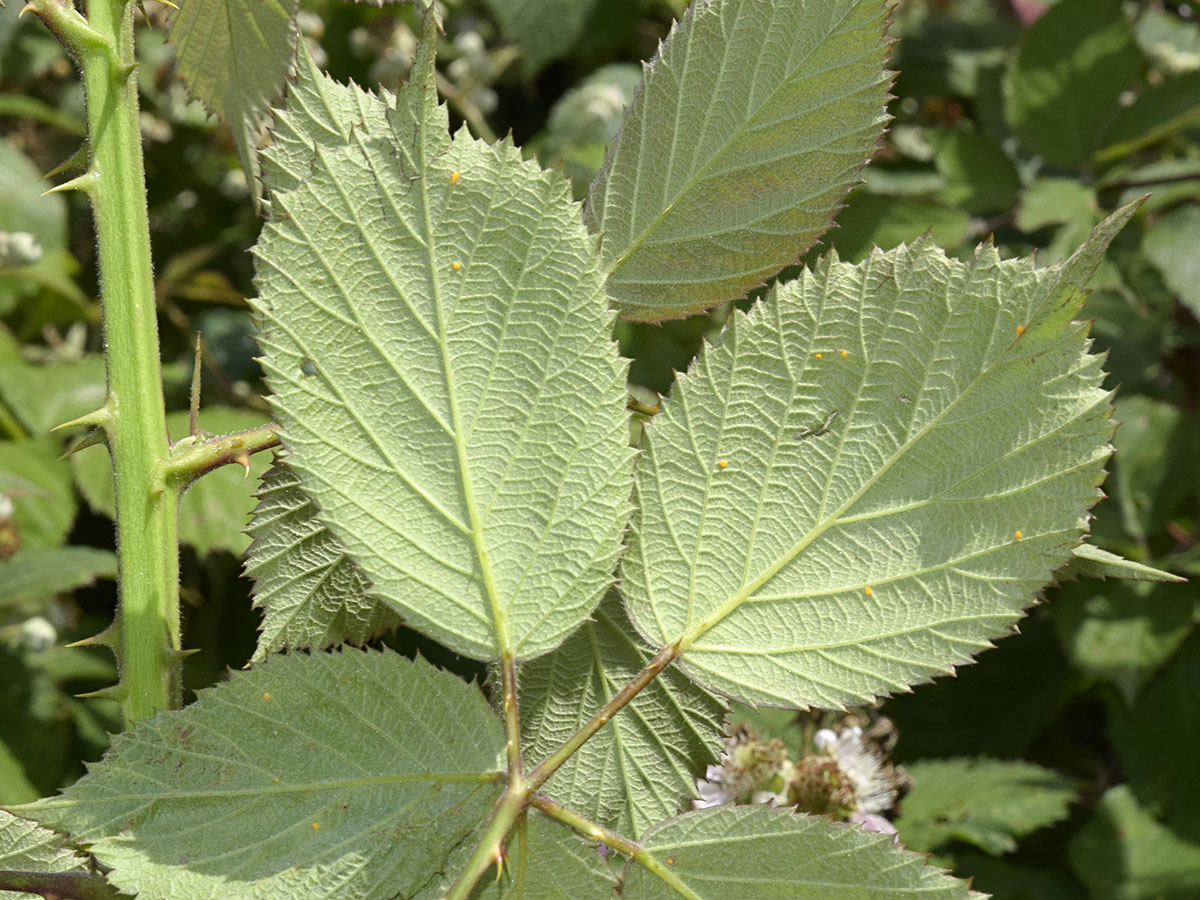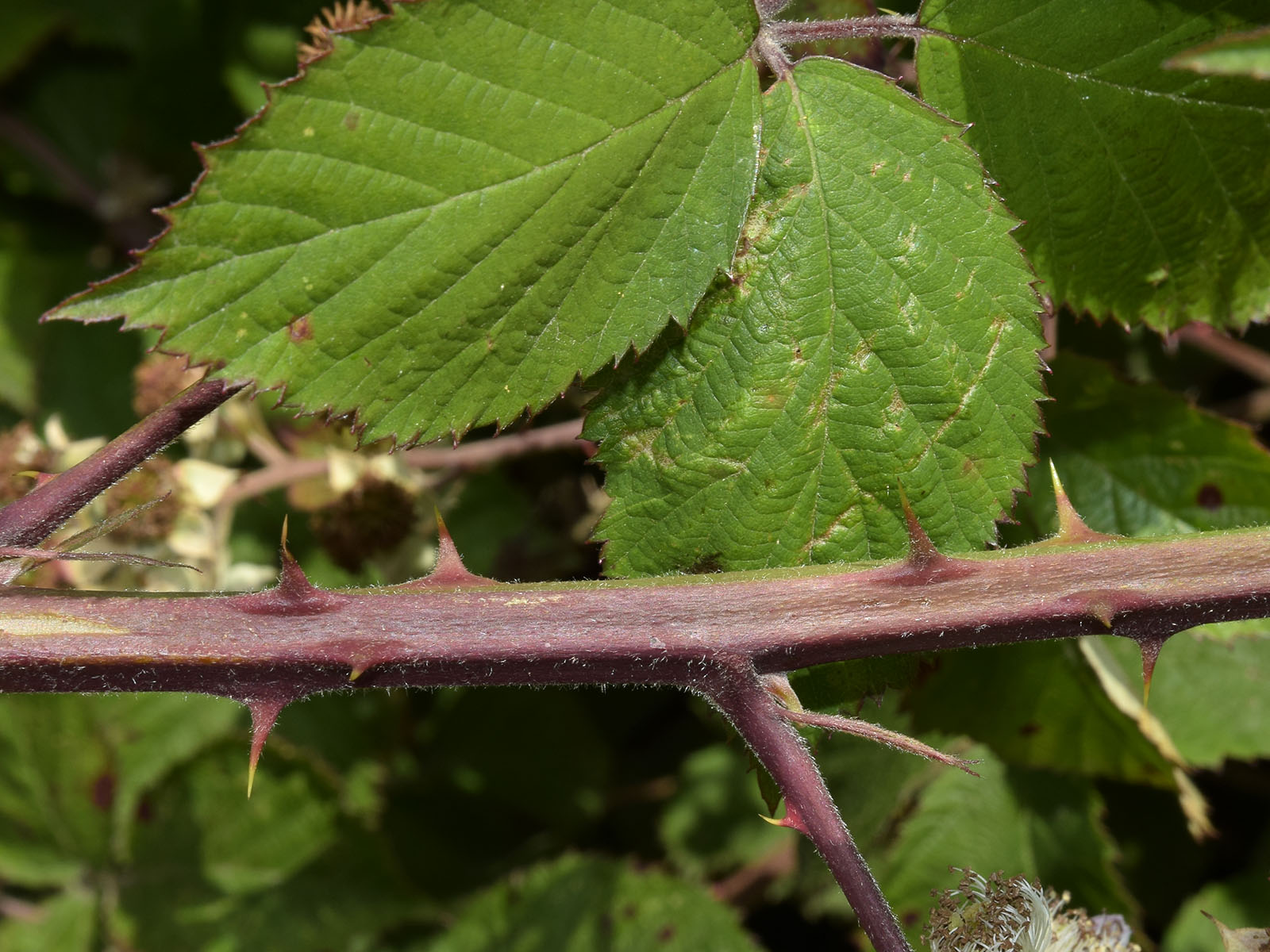
Rubus c.f. lasiodermis – Series Rhamnifolii
back to Alphabetical index · Taxonomic index
This bramble is mainly known from Hampshire and Dorset but has evidently spread to Somerset and West Sussex in recent years. The photos taken here are mainly of a distinctive form frequent in southern Hampshire which David Allen considered might have arisen from a hybrid with the ‘true’ plant described from Dorset, but possibly the differences are minor and may relate mainly to the leaflet shape. Generally it is instantly recognisable by the strongly-armed straight (and often erect) narrow panicles bearing pale pink flowers. Both the rachis and first-year stem are thickly pubescent, dark purple in colour and have long stout prickles. The yellow-green, coarsely serrate leaflets with sides partly folded in are also very distinctive. The habit is low to medium arching and the stems are often relatively thin compared to other brambles. Although placed in the Rhamnifolii, there are usually no glands anywhere on the plant.

The inflorescence is narrowly pyramidal with a long, non-leafy cylindrical terminal portion. The branches are ascending to almost patent and the rachis is only slightly flexuose. The numerous long prickles are reddish with a distinct yellow tip. They are usually straight and patent to slightly downturned or sometimes curved.

Flowers are relatively large, c.2.5-3cm across with broadly elliptical pink petals, typically about 12-13 x 9-10mm. Petals are not touching and tend to be widely spaced when the flowers are fully open. The petal colour is usually a pale pink, but can be brighter pink, and often fades to nearly white. As with most brambles, the petal colour is best seen in the flowers which have not yet opened. Stamens are longer than the styles, relatively dense and may have a slight pink tinge below. Styles are normally pale yellow, but can be pink at the base. Sepals are whitish-felted and shortly pointed.



Upper panicles of a Dorset plant:


The panicle usually has ternate leaflets lower down and often one or two simple leaflets at the base of the cylindrical portion. The leaflet shape is similar to those on the main stems. The photos below are of a slightly atypical plant with deeper pink petals (though these have darkened on drying), red styles and broader leaflets. The specimen also had a single long-stalked gland in the upper part of the rachis.
This bramble is mainly found within acid woodland, often growing in disturbed places alongside tracks and paths or within managed areas and clearings. It may also be somewhat adventive – the photo below is of a bush which was growing over a trimmed Cotoneaster hedge in an urban street in Gosport.

Leaves are often distinctly yellow-green in colour, sharply and quite deeply serrate with an acuminate apex. The leaflets are somewhat plicate and folded or curled inwards so that the whitish felting of the underside can be visible around the margins.



The terminal leaflet is relatively narrow, obovate, about 8 x 5cm, but can be broader and more elliptical in shape (perhaps typically so in Dorset plants).


Leaflets are shortly downy below, often appearing greenish-white felted.


The stem is reddish purple, bluntly angled, with strong pubescence but no glands. The prickles are relatively long, patent to slightly downturned or curved, red with a yellow point like those of the rachis.


Leaves and stem of a Dorset plant. Compared to the Hampshire plants the terminal leaflet is broader and the stem less pubescent, but I don't know if these differences are constant.


